

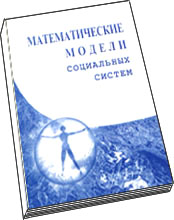
Mathematical Models of Social Systems :
Text-book. - Omsk: Omsk State University, 2000. - 256 p.
A.K. Guts, V.V. Korobitsin, A.A. Laptev, L.A. Pautova, J.V. Frolova
Text-book is dedicated to problems of mathematical modelling and
computer simulation of social
processes and presents itself synopsises of lectures, which were read
to students of Omsk State University under support of grant
Course Development Competition of
the Central-European university (Budapest, Hungary).
For students of mathematical and sociological departments.
Contents:
PrefaceIntroduction ( L.A. Pautova)
- 0.1. Reality Simulation
- 0.2. Science as a G-A-M-E
- 0.3. Falsification
- 0.4. Trap "Computer Simulation"
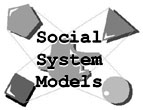
- 1.1. Social Systems
- 1.2. Psycho Historical System
- 1.3. Dynamical System Model
- 1.4. Field Model
- 1.5. Statistical Model
- 1.6. Stochastical Model
- 1.6.1. Langeven's Equation
- 1.6.2. Focker-Plank's Equation
- 1.7. Model of Public Opinion
- 1.8. Model of Distribution a Power System
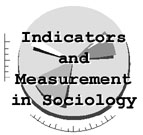
- 2.1. From Abstract to Concrete
- 2.2. Notion Compare Process and its Stages
- 2.3. Indicator Models
- 2.4. Measurement in Sociology
- 2.5. Compare Process and Measurement in Sociology and Science
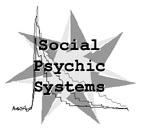
- 3.1. V.M. Bekhterev's Theory About Collective Reflexes
- 3.1.1. Reflexology
- 3.1.2. Behaviorism
- 3.1.3. Collective Reflexology
- 3.2. Two Ways for Social Psyche Formalization
- 3.2.1. Collective Reflexes Model
- 3.2.2. Statistical Model
- 3.2.3. Computer Simulation of Collective Reflexes
- 3.3. Stochastical Model Collective Reflexes
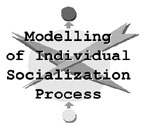
( J.V. Frolova, V.V. Korobitsin)
- 4.1. Individual Socialization Theory
- 4.1.1. Description of Individual Structure and Personality Formation Process
- 4.1.2. Personality's Status-Role Concept
- 4.2. Individual Socialization
- 4.2.1. Personality Formation Process Formalization
- 4.2.2. Computer Simulation Results
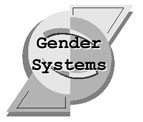
( J.V. Frolova, V.V. Korobitsin, A.A. Laptev, A.K. Guts)
- 5.1. Gender Formalization Idea
- 5.1.1. Gender Definition and Gender Relations
- 5.1.2. Relation System Theory
- 5.2. Gender Relation Formalization
- 5.2.1. Gender as a System of Fundamental Relations
- 5.2.2. Unisexual and Trisexual Genders
- 5.2.3. Binary Gender Categorization
- 5.2.4. Fundamental Relation System Standards
- 5.3. Index of Dissimilarity
- 5.4. Transformation of Gender Relations
- 5.5. Gender Relation Model
- 5.5.1. Gender Formalization
- 5.5.2. Mathematical Model
- 5.5.3. Computer Simulation
- 5.5.4. Fundamental Relation System as base of Gender Relation Model
- 5.6. Gender Relations in Artificial Society

- 6.1. Interpersonal Relation Formalization
- 6.1.1. Relation System Theory
- 6.1.2. Interpersonal Interactions as a System of Fundamental Relations
- 6.1.3. Interpersonal Interactions Categorization
- 6.2. Projection on Sociometrics
- 6.2.1. Sociometrics Indexes
- 6.2.2. Child Status Index in Group
- 6.2.3. Leader's Perception Adequacy Degree
- 6.3. Interaction Model by E.Bern
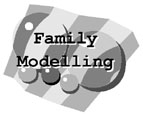
- 7.1. Premiseses to Making the Family Model
- 7.2. Model of Family Adaptive Behaviour
- 7.2.1. Family Formalization
- 7.2.2. Mathematical Model
- 7.2.3. Computer Simulation
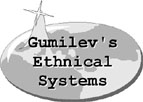
- 8.1. Basic Definition of Ethnogenesis Theory
- 8.2. Tension and Energy of Ethnical Field
- 8.2.1. To Construct Ethnical Field Tension Function
- 8.2.2. Coupling the Tension and Energy of Ethnical Field
- 8.3. Mathematical Model of Ethnical Field
- 8.3.1. Definition of Drive Energy Stream and Balance Equation
- 8.3.2. Ethnical Field Equation
- 8.3.3. Function of Drive Energy Movement
- 8.3.4. Function of Drive Energy Conduction
- 8.3.5. Function of Drive Energy Induction
- 8.3.6. Ethnos Contend Coefficient
- 8.3.7. Ethnical Field Model
- 8.4. Simulation Result
- 8.4.1. Input Data for Simulation
- 8.4.2. Simulation Process
- 8.4.3. Statistical Result

- 9.1. Sociogenesis Mathematical Model
- 9.1.1. System Variable Description
- 9.1.2. Political System Equation
- 9.1.3. Economics System Equation
- 9.1.4. Societal Community Equation
- 9.1.5. Ethnical Sample System Equation
- 9.2. Economy-Politics Model
- 9.3. Qualitative Analysis of Economy-Politics Model
- 9.3.1. Balance Condition Research
- 9.3.2. Infinity Point Research
- 9.3.3. Phase Portraits and Bifurcation Analysis
- 9.3.4. Computer Simulation and Result Interpretation
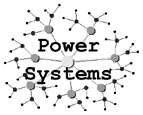
- 10.1. Empire Politic Power Structure
- 10.2. Empire Rise Model